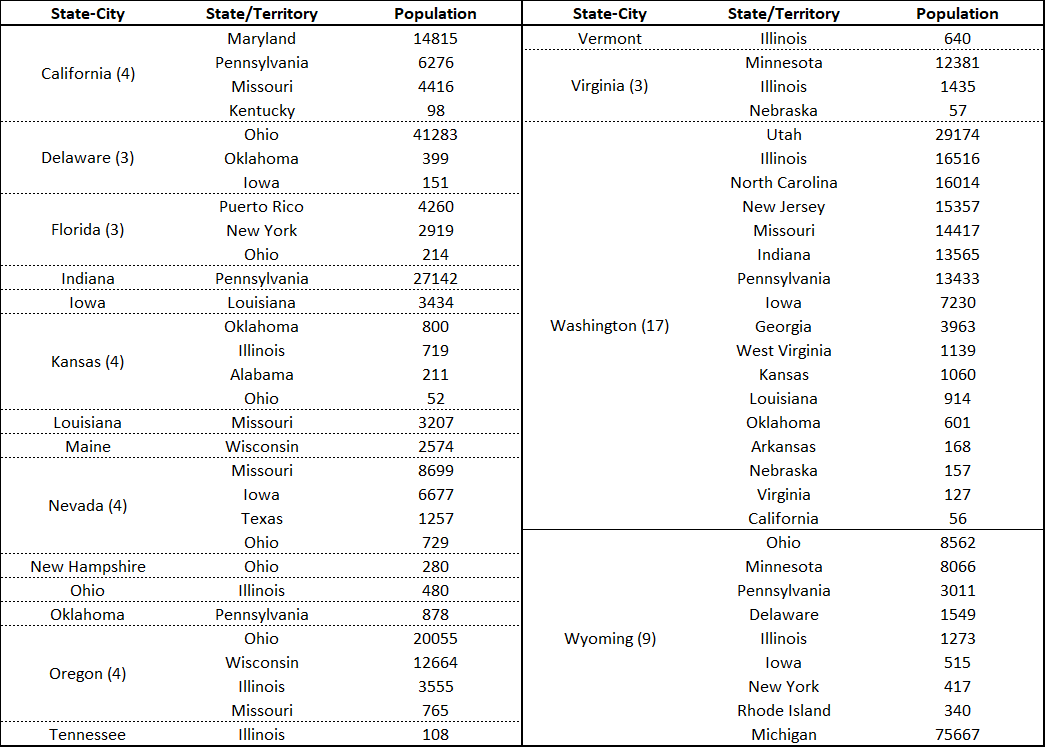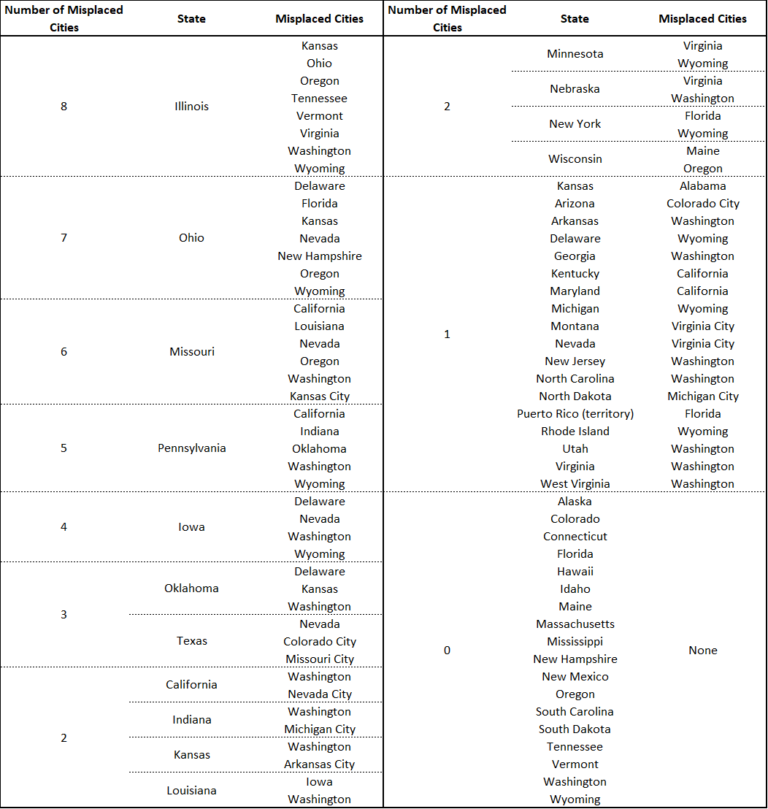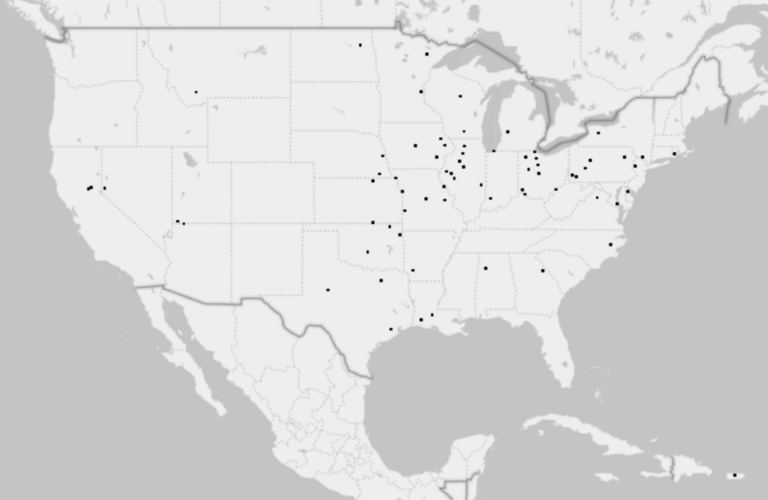Inspiration
There is a village called Belgium that is located a few dozen miles north of where I grew up in Wisconsin. I have swung by once or twice while biking on the Interurban Bike Trail, and I have always been amused that the village’s name is shared with that of the European country. The thought recently occurred to me that there exist cities in the United States that share the same names of states in which they are not located. How many such cities are there, and where are they located in the United States?
On Misplaced State-Cities
I will first coin the term “state-city” as a city that shares the name with a state. Do not confuse this term with “city-state,” which is properly defined as a “political system consisting of an independent city having sovereignty over contiguous territory and serving as a centre and leader of political, economic, and cultural life.” Perhaps this definition reminds the reader of such examples as Sparta and Athens (of present-day Greece, that is, not the nine cities named Sparta and eleven named Athens in the US).
For the purpose of this shower thought-analysis, I will broaden the term “state-city” to include all incorporated, census-recognized cities/towns in the United States; that is, all 28,372 listings available (for free) from simplemaps.com. While this dataset seems quite comprehensive, I did note that the population numbers given for cities are those of the metropolitan area rather than the city proper.
Using this database, I was able to quickly pull the list of all state-cities that are misplaced in another state. In total, there are 90 cities named after states, including 60 misplaced state-cities covering 29 different states (Puerto Rico isn’t a state, I know, but I wasn’t going to pass up the opportunity to list Florida, Puerto Rico, population 4,260). The 60 misplaced state-cities range in population from 52 (Kansas, Ohio) to 41,283 (Delaware, Ohio). As expected, the most frequent misplaced state-city was that of Washington – the namesake of 17 such non-Washington cities. The city following in second place, oddly enough, was Wyoming, of which there were 9 non-Wyoming cities.

The thought then occurred to me that there also exists misplaced cities in the United States with the name format of STATE CITY, e.g. Kansas City, Missouri. Let us term these cities “state-city-cities.” There are a total of 28 cities with the name format of STATE CITY, of which 10 are misplaced. These 10 misplaced state-city-cities range in population from 216 (Virginia City, Montana) to 1,636,715 (Kansas City, Missouri).

The largest misplaced city, Kansas City, MO, has a population more than 30,000 times that of the smallest misplaced city, Kansas, OH. In fact, the 69 misplaced state-cities and state-city-cities not named Kansas City have a combined population of 696,004, which is not even half the population of Kansas City alone!
As visualized by the logarithmic box-and-whiskers plots, the median population of the state-city-states is larger than that of the city-states, at 8,258 and 1,492, respectively.

The question now arises – which states are to blame for these confusing city names? We find that Illinois leads the culpability list with 8 misplaced cities, following closely by Ohio (7), Missouri (6), Pennsylvania (5), and Iowa (4) to round out the top five. A total of 18 states managed to avoid the ignominy of misplaced state-cities or state-city-cites.

Fortunately, the dataset came with the latitude and longitude coordinates of all 28,372 incorporated cities/towns in the United States, so we are able to visualize the locations of these 70 misplacements on the map. There appears to be an unfortunate cluster of misplacements in the Midwestern region. Without delving into the history of each of these cities, I cannot definitively analyze why these names were applied to these cities, but I have a few theories (that I will not list here for sake of brevity). Cheers!

Reflection
I realize that I have not been to a single misplaced state-city or state-city-city, not even the two misplaced state-cities within my own state, Wisconsin. Time for a road trip!
